Web exclusive
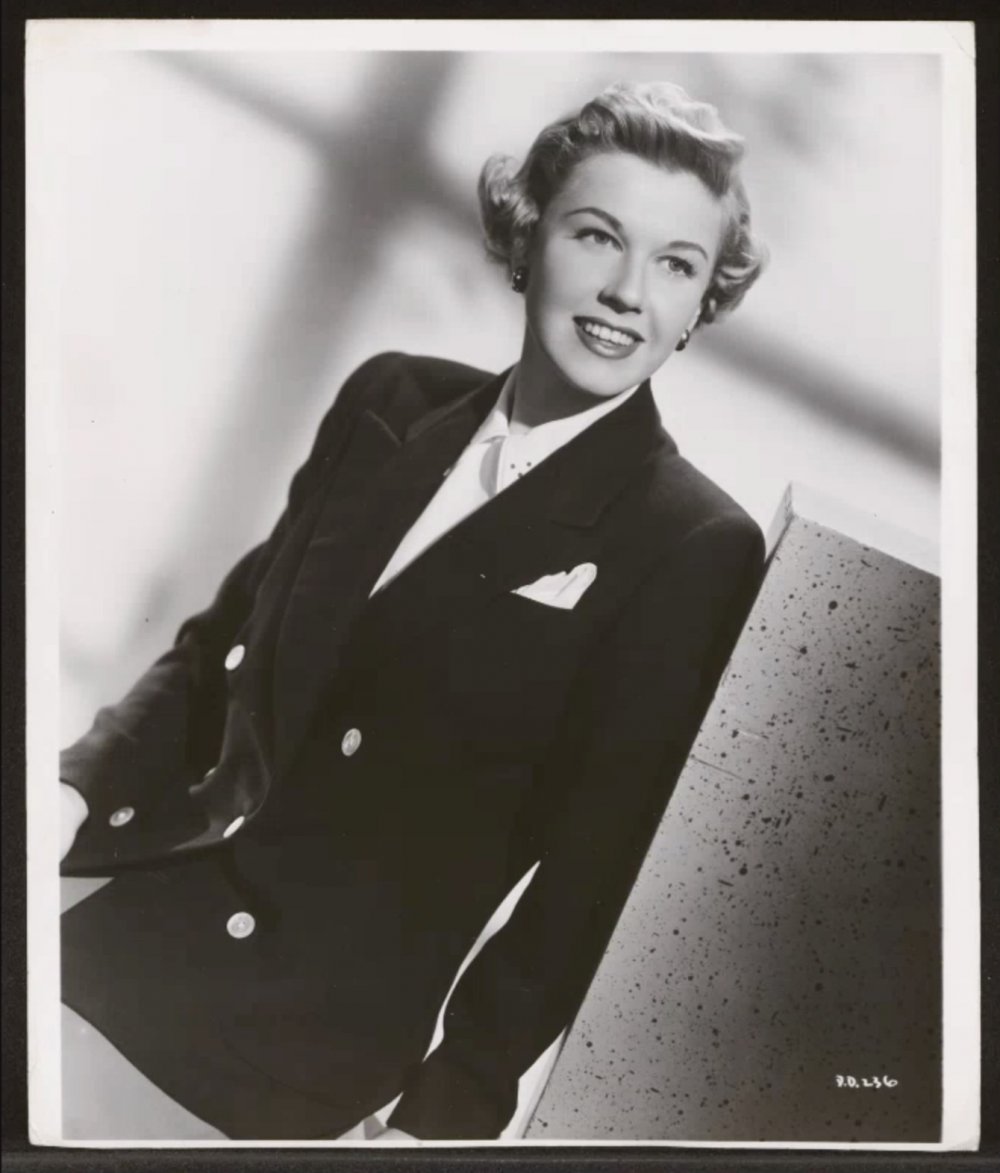
When Alfred Hitchcock went back to the well to remake his 1934 film The Man Who Knew Too Much, the great director retained not only the basic contours of the plot but the title, too. In hindsight, this might not have been the best move. If Hitchcock had been more forward-looking, he might have seriously considered renaming the film The Woman Who Saw It Coming.
That woman was Doris Day, who has died aged 97. In the 1956 remake of The Man Who Knew Too Much, the Cincinnati native (born as Doris Mary Anne Kappelhoff) was given one of her most distinctive and demanding parts as singer-turned-homemaker Jo McKenna. Although Hitchcock fans seldom speak of Day in the same breath as the director’s preferred screen heroines such as Grace Kelly or Vera Miles, the Cincinnati native had a quality lacking in those carefully coiffed emblems of perfection: rough-and-tumble common sense. This was, after all, the woman who once played Calamity Jane.
Recall the opening scene in the film in which Jo rides with her physician husband Ben (Jimmy Stewart) and son Hank (Christopher Olsen) in a bus snaking through Morocco. There, the inscrutable Louis Bernard (Daniel Gélin) inveigles himself into the orbit of the McKennas, seizing on the talkative good doctor. Among the questions Bernard poses to Ben: where does he practice medicine? Why is he going from Casablanca to Marrakech? Did the family travel via Paris?
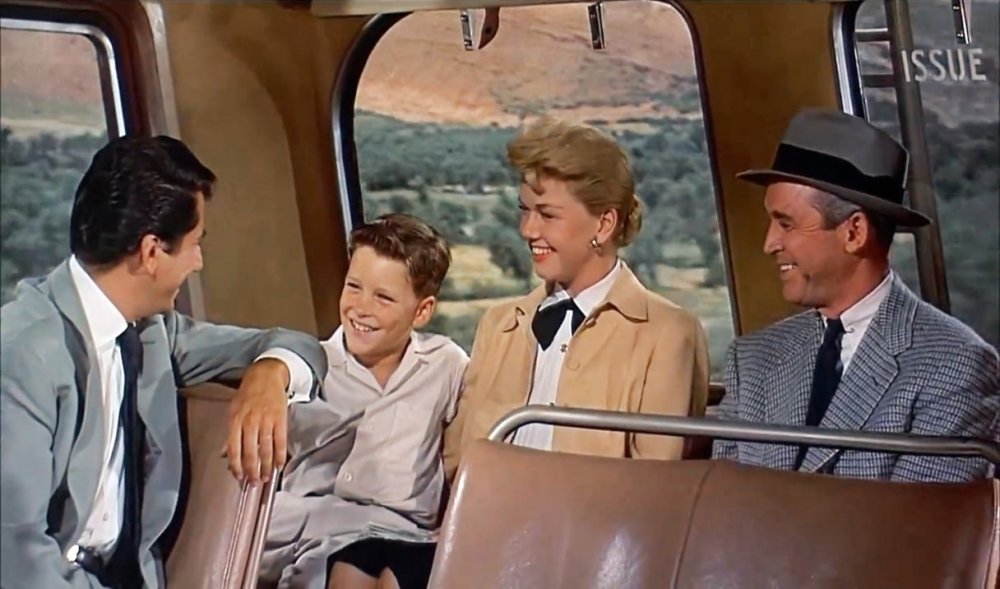
The Man Who Knew Too Much (1956)
As the two men engage in this one-sided back-and-forth, Hitchcock repeatedly cuts to an angle of Day, whose look of wary suspicion – her eyes narrow and her mouth stays fixed – contrasts sharply with Stewart’s plain-spoken, open-book earnestness. Later, when the family is on its own again, Jo makes a pointed observation to Ben – one we can imagine a level-headed Midwesterner like Day making herself: “You don’t know anything about this man, and he knows everything there is to know about you…”
The script may have contained those words before Day was cast, but it is the performer who persuades: we can imagine a levelheaded Midwesterner like Day making the case to her clueless husband.
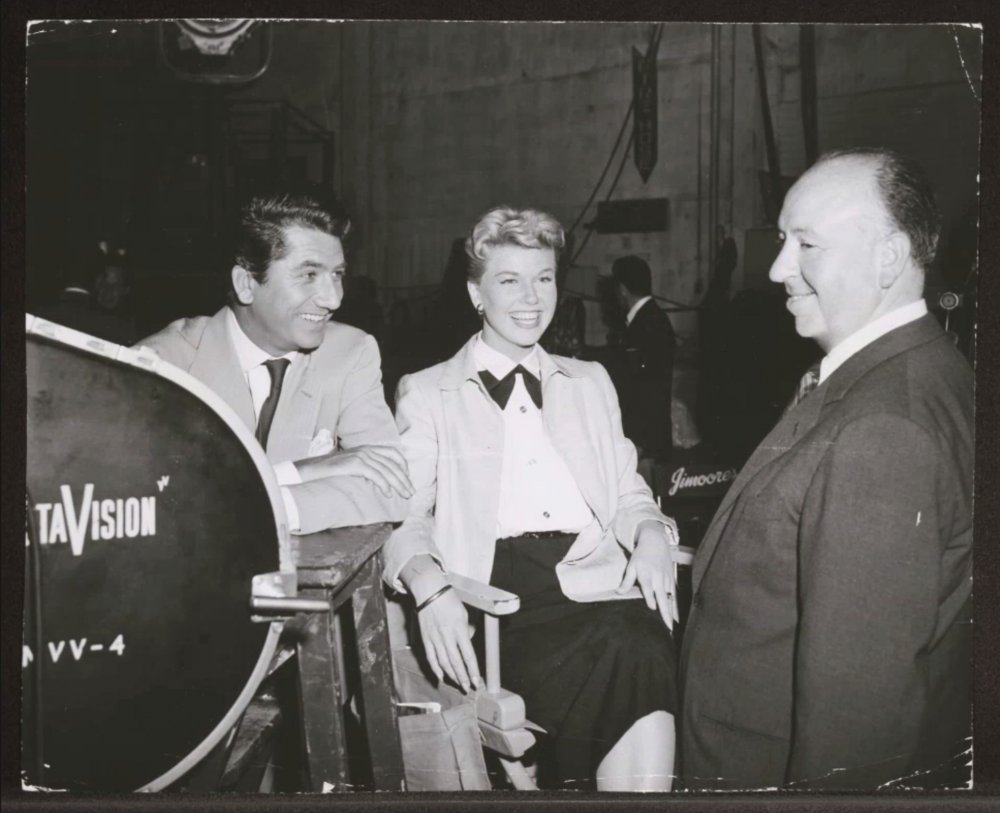
Day with Daniel Gélin (left) and Alfred Hitchcock on the set of The Man Who Knew Too Much (1956)
Later, when Hank is made a kidnapping victim as part of an assassination conspiracy, Day physically embodies Jo’s anguish: learning of the situation from Ben in their hotel room, she first embraces her husband, then fights him off and finally tries to push past him before he persuades her to rest on their bed. Day’s sobs, like her good sense, are unimaginable in another Hitchcock ice princess. “We can believe in Doris Day’s tears, and no other Hitchcock heroine’s tears seem so unlike face-pulling,” wrote Jean-Luc Godard in Cahiers du Cinema in 1956.
Throughout her screen career, Day battled the popular perception that there was nothing more to her than her signature blonde hairdo, wide-and-deep smile and – of course – bright, effervescent voice. (Let us not forget that Day was a vibrant vocalist whose records for Columbia included 1956’s Day by Day and 1961’s I Have Dreamed.) Yet her best film appearances reveal an actor of inexhaustible savviness, spunk and – sometimes – sorrow. She convinces when she takes over the piloting of a plane in Andrew L. Stone’s Julie (1956), speaks bluntly to Stewart in The Man Who Knew Too Much, or stands up to Rock Hudson in Michael Gordon’s Pillow Talk (1959).
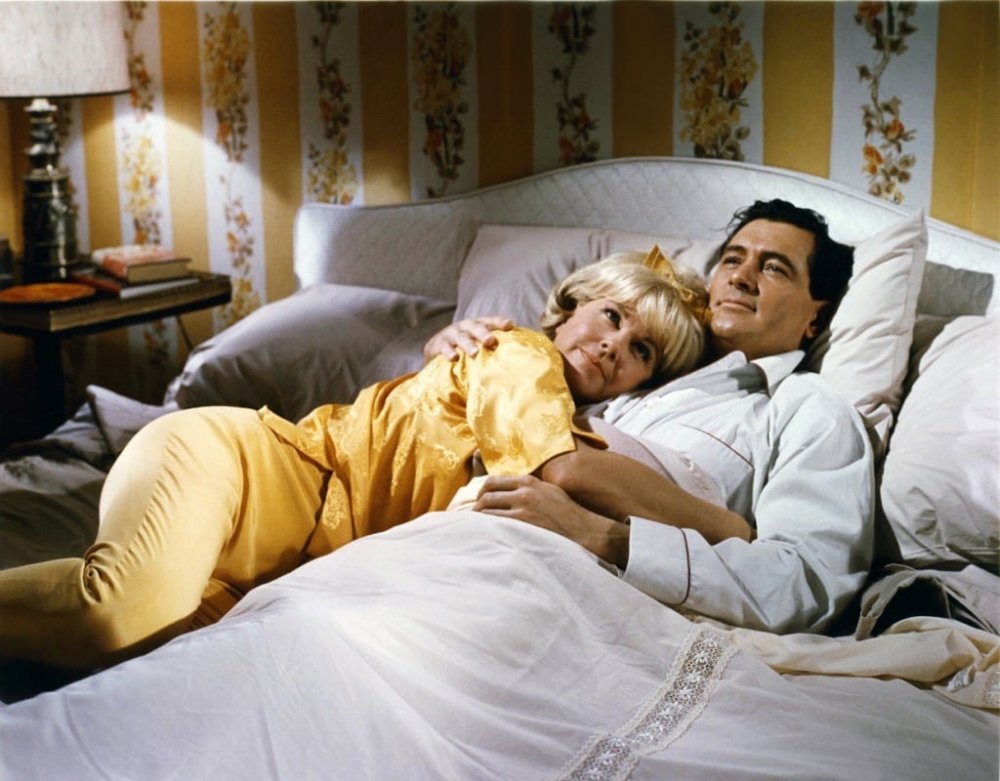
Send Me No Flowers (1964)
Alas, the cascade of comedies that capitalised on the sense of on-screen simpatico between Day and Hudson – Delbert Mann’s Lover Come Back (1961) and Norman Jewison’s Send Me No Flowers (1964) were produced in the wake of the smash success of Pillow Talk – contributed to the notion that the performer was too superficial for words. Indeed, watching these films is akin to consuming Willy Wonka’s Fizzy Lifting Drinks: refreshing, airy and usually forgettable. But Day herself never is – her graceful gumption makes her stand shoulder-to-shoulder not only with Hudson but Cary Grant in That Touch of Mink (1962) and James Garner in Move Over, Darling (1963).
Yet to take the full measure of Day, it might be helpful to divorce her from those candy-coloured confections – and maybe from colour photography altogether. In her black-and-white films, the actor showed off her potential for nuance and subtlety, especially her performance as singer Jo Jordan in Michael Curtiz’s Young Man with a Horn (1950). In one memorable scene in a club, Day sings Too Marvelous for Words with reserve and poise – the very opposite of the forceful vocalisation of Que Sera, Sera, her signature song in The Man Who Knew Too Much. At one point, Curtiz cuts to an over-the-shoulder shot of trumpeter Rick Martin (Kirk Douglas) looking at Jo from the wings of the stage: standing in the distance, illuminated by a splash of bright, white lights, Day rarely looked more ethereal.
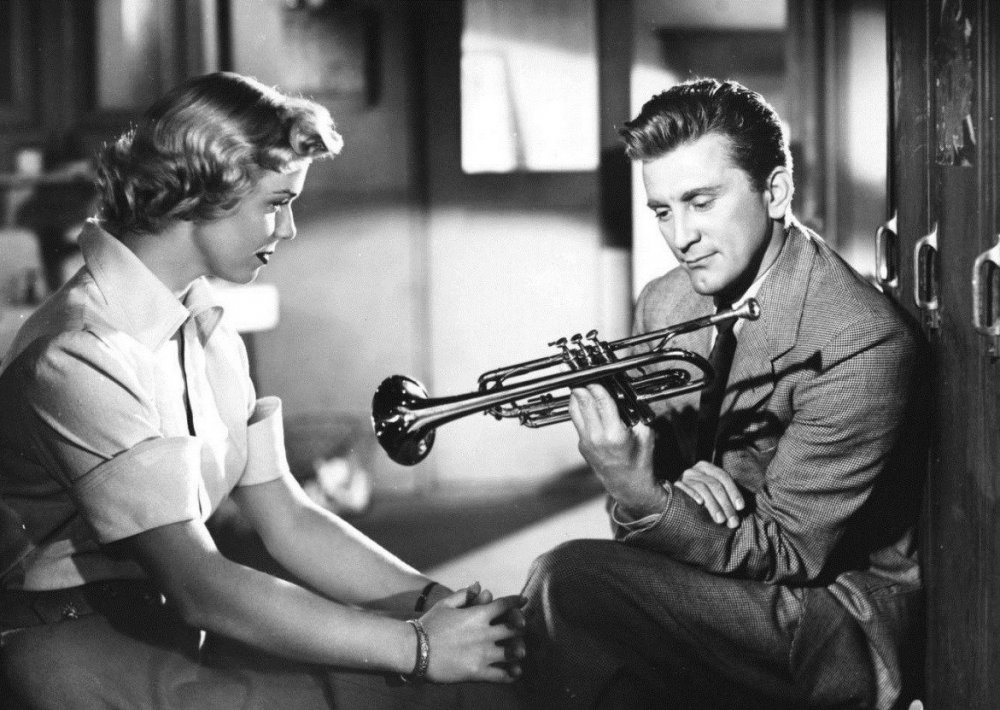
Young Man with a Horn (1950)
Day died on the heels of a 51-year self-imposed exile from feature films. One regrets not only that a gifted young director did not goad her to reconsider her retirement – Albert Brooks tried to sign her up for the Debbie Reynolds part in Mother (1996), a role to which she would have lent gravity and spirit – but that she never worked with the truly first-rate comedic filmmakers of her time, like Howard Hawks or Preston Sturges. One can easily imagine her in Paula Prentiss’s shoes, opposite Rock Hudson, in Hawks’s Man’s Favorite Sport? (1964), or in some never-realised Sturges concoction.
Yet Hitchcock knew what he was getting. At the end of The Man Who Knew Too Much, Jo alone takes the decisive action that results in Hank being set free: she belts out the song Que Sera, Sera, making the boy aware that she is in the building where he is being kept. In an interview with Peter Bogdanovich, Hitchcock acknowledged that Day’s gifts as a singer led to the creative use of the song in the film. “If you have an element within the picture, use it,” Hitchcock said. “If you’ve got a singer, you don’t just shove her in singing – use it dramatically.” Doris Day was not merely winsome – she was always part of the drama.
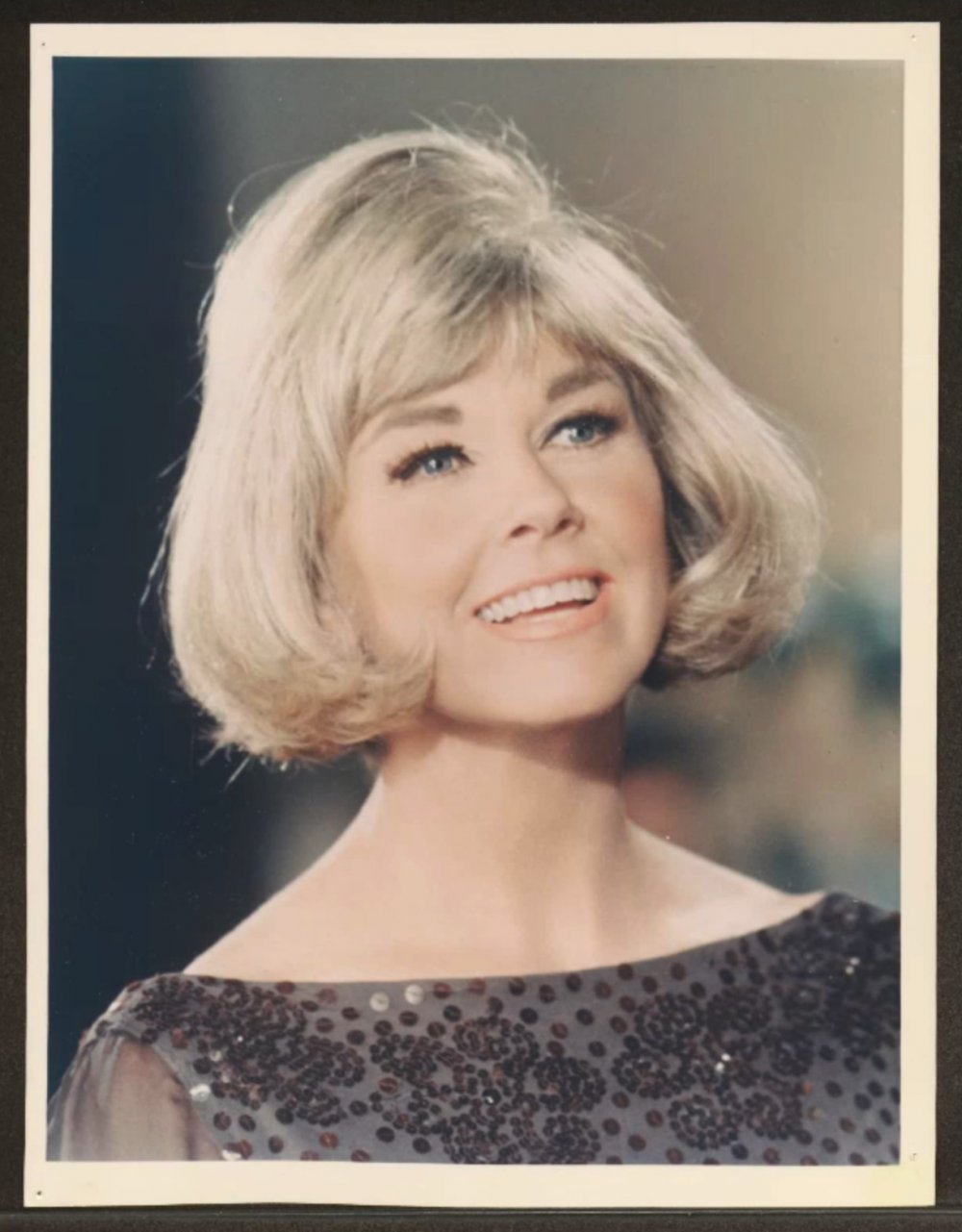
Doris Day in The Doris Day Show (1968-73)
-
The Digital Edition and Archive quick link
Log in here to your digital edition and archive subscription, take a look at the packages on offer and buy a subscription.





